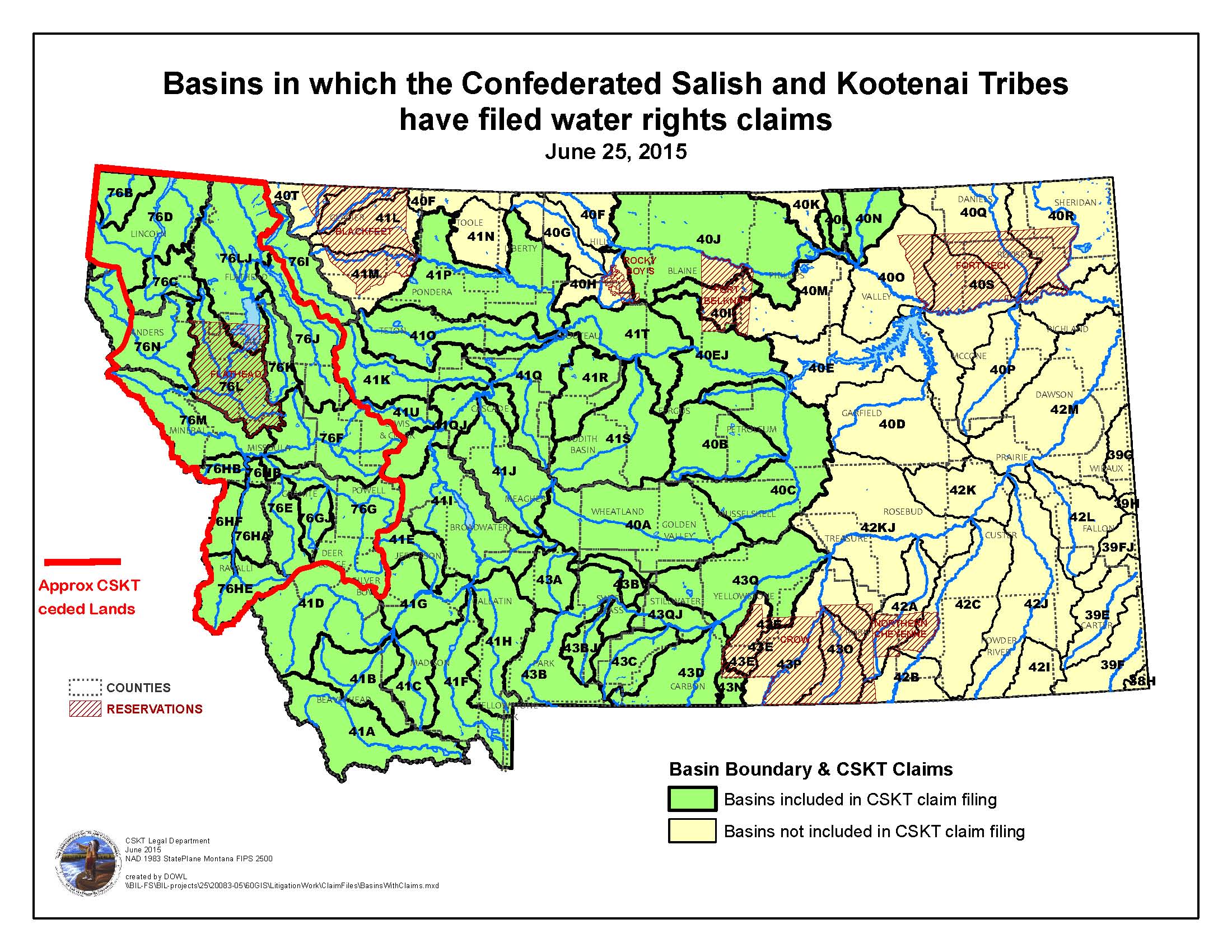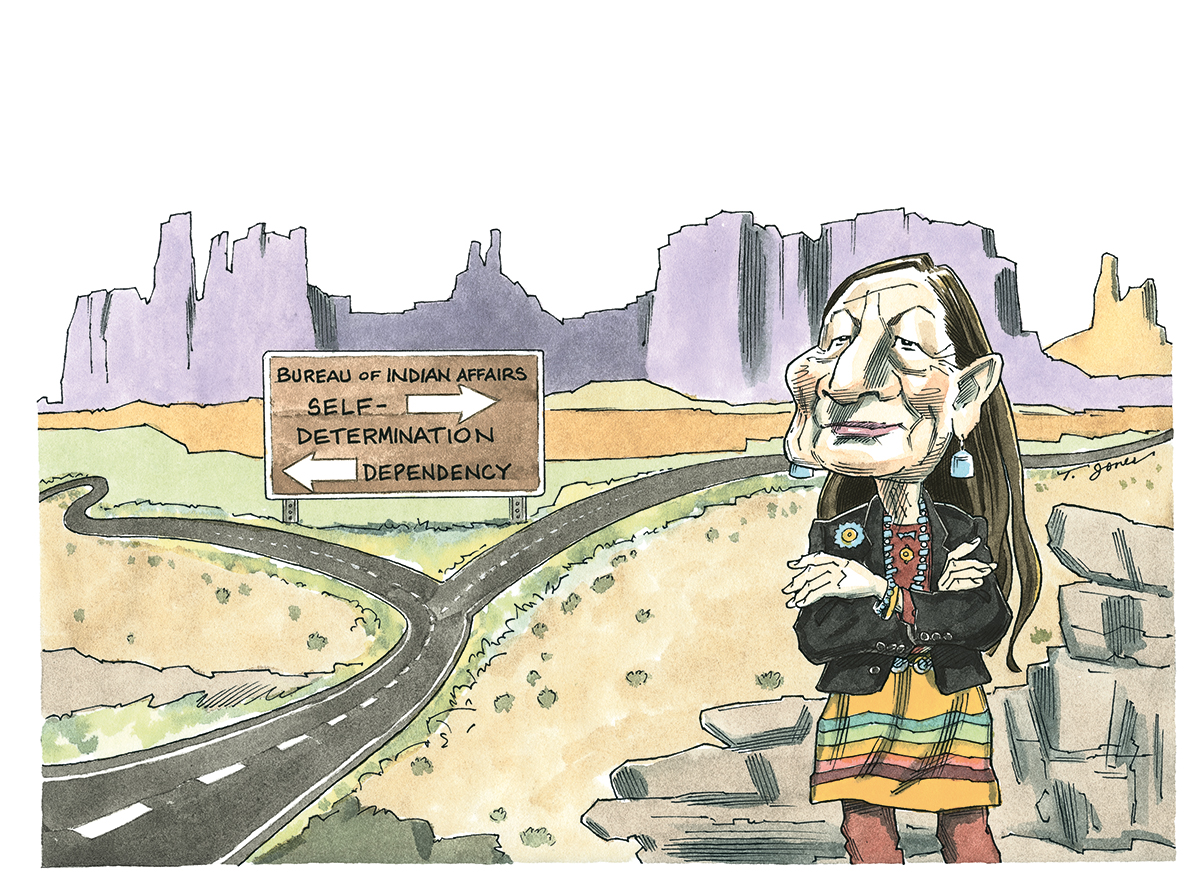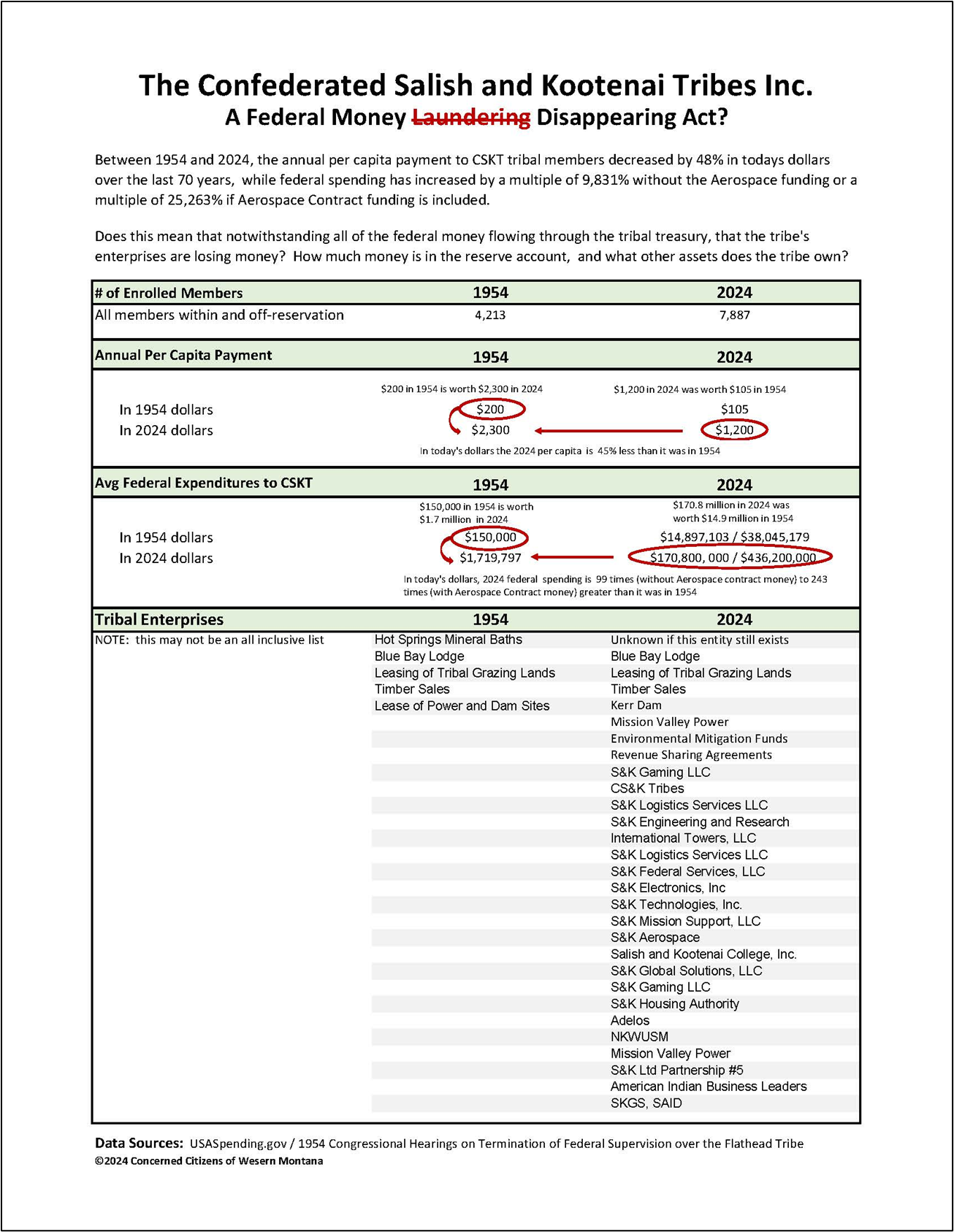© 2024 Concerned Citizens of Western Montana
Note: When we refer to the “Tribe” in our articles, such reference is intended to be the CSKT tribal government corporation, and not individual Indians or tribal members. With the exception of their “membership in the tribal corporation” we consider tribal members to be separate and distinct from their government, as are we from our own corrupt governments.
It’s time to come to terms with the fact that should the Flathead Compact somehow manage to stand, it will not bring finality to the “grievances” of this tribe.
The overreach that this compact is, if successful, will instead become the impetus needed to usher in a new era of far more aggressive overreach by the federal government on behalf of tribes throughout the country.
Additionally, the CSKT government and its wolf pack of attorneys have also proven to be overly aggressive on their own behalf
To see their roadmap for the future, one need look no further than the…..
- Tribes’ 2014 lawsuit, filed to coerce legislative ratification of the water compact,
- Steve Daines legislation ratifying the compact in Congress, and the
- 10,000 claims filed by the US / CSKT after the compact was ratified by the Montana legislature in 2015.
No matter how much water, how much land, or how much money this tribe receives in the form of legal “settlements,” whether they be negotiated or legally coerced, it will never be enough for the CSKT tribal government.
This is because it is their corporate “business model,” and a very successful one it has been.
C$KT Inc: A Multi-Billion Dollar Corporation
In the ninety years since the CSKT tribal government was established via the 1934 Indian Reorganization Act, the CSKT tribal government has become what appears to be a multi-billion dollar corporation
This was not accomplished through the grit and determination of the Indian people, or even the CSKT tribal council government. It did not come out of the creation of something of value by, on or behalf of the Indian people, it is simply the result of vast amounts of federal funding pumped into just one of 574 federally recognized tribes.
It was accomplished via federal legislation under the auspices of tribal “self determination”, resulting in billions of federal dollars flowing through the CSKT treasury for aerospace contracts, infrastructure projects, social welfare programs, grant funding, and other tribally contracted (638 contract) federal responsibilities.
At our last count, the CSKT had at least 16 tribal corporations under its corporate umbrella, and each of them has been busy sucking up every grant, every “federal contract” that is made available to them.
Financial “Settlements” of “Never Ending Grievances”
In addition to federal government largess, another other leg of the tribe’s financial stool is the never ending lawsuits for financial “settlements” of their ever evolving grievances and environmental mitigation settlements.
By all appearances, each settlement enriches the tribe further while at the same time encroaching upon the private property and constitutional protections of the people or the entities that have been targeted. The deeper the pockets the better, and how much deeper can you get than into the pockets of the federal reserve backed U.S. Government, including Bonneville Power?
Congress made it absolutely clear that the intent of the Indian Claims Commission and the United States Court of Claims cases that dealt with Indian grievances was to bring FINALITY to Indian complaints once and for all.
In the 2024 view of this history, it seems that instead of bringing finality, these court cases, long ago settled with the tribe, established a springboard from which the CSKT continues to go back to the “settlement” trough for the same issues, over and over again. We keep re-litigating the past.
See: CSKT Indian Claims Commission and Court of Claims Settlements
Why Are Indian Tribes Still Suing Over Ancient Treaties?
Docket 61: The CSKT Off Reservation Aboriginal Title Claim
Docket 50233: More Montana Gaslighting
What is Res Judicata and Why is it Important?
Source: Excerpted from BonaLaw
The term res judicata is Latin for “a matter decided.” If a plaintiff successfully litigates a claim, resulting in a judgment in their favor, that plaintiff cannot assert the same claim against the same defendant in a later lawsuit. Similarly, if the litigation results in a final judgment for the defendant, the plaintiff cannot try again in a future lawsuit. That plaintiff’s options are limited to the available appellate procedures.
Elements of Res Judicata
-
- Relitigation – Under res judicata, a party cannot bring a claim in a lawsuit once that claim has been the subject of a final judgment in an earlier lawsuit. This usually applies to any new lawsuit filed in any court, not just the court that issued the earlier judgment.
- The Same Cause of Action – A party cannot bring the same claim, or cause of action, against the same defendant after a final judgment. We tend to use the terms “claim” and “cause of action” interchangeably, but they do not always have precisely the same meaning in a legal context.
- The Same Parties, or Closely Related Parties – When the parties to a lawsuit are individuals, it is usually easy to determine when a new lawsuit involves the same parties. Res judicata can also bar lawsuits by a person or entity “in privity with” a party to the original lawsuit, as the California Supreme Court put it. This may include anyone acting as an agent for the original plaintiff, or a subsidiary of a corporate plaintiff. The same goes for defendants, such as when an unsuccessful plaintiff tries to bring the same claims against a subsidiary of the defendant or another closely related entity.
For purposes of the CSKT discussion, we would like to point you to res judicata in the context of two western Montana lands and water legal settlements:
- within the boundaries of the Flathead Reservation (the US Court of Claims), and
- outside of the Flathead Reservation boundaries (Indian Claims Commission).
US Court of Claims Docket 50233: Within Reservation Boundaries
In 1971, the CSKT successfully settled a claim pertaining to lands within the Flathead Reservation boundaries for $6,066,668.78 plus interest for a total paid to the tribe of $22,361,549.07.
In today’s dollars that settlement is the equivalent of $172,450,000.
That “final” settlement did not stop the tribe from negotiating, or the state of Montana agreeing to a compact that effectively gives the tribe ownership of all of the water flowing through, over and under the reservation. Is anyone foolish enough to think that the US Court of Claims settled the tribes’ grievance for the land without the water?
This same settlement also did not stop the tribes from filing a lawsuit on the same issues in February of 2014 against the United States, Montana, the Flathead Project Districts, several individuals, and an unnamed number of John Does.
Thanks to the efforts of Concerned Citizens of Western Montana and then state senator Verdell Jackson, Mountain States Legal Foundation agreed to take the case on for four of the individuals (two couples) that were named in the lawsuit;
In the only brief filed by Mountain States before the case was dismissed in May of 2015, their attorneys made the following argument in reference to the Court of Claims Docket 50233 pertaining to the allotment and opening of the reservation to settlement in fulfillment of Article VI of the Hellgate Treaty):
RES JUDICATA BARS PLAINTIFFS FROM CLOUDING TITLE TO LANDS PATENTED TO LANDOWNERS’ PREDECESSORS.
Res judicata is the collective moniker for claim preclusion and issue preclusion (also known as collateral estoppel). Issue preclusion bars “‘successive litigation of an issue of fact or law actually litigated or resolved in a valid court determination essential to a prior judgment,’ even if the issue recurs in the context of a different claim.” Issue preclusion bars an issue from being relitigated if four requirements are met:
-
-
- there was a full and fair opportunity to litigate the issue in the previous action;
- the issue was actually litigated in that action;
- the issue was lost as a result of a final judgment in that action; and
- To the extent Plaintiffs ask this Court to declare the priority dates of their water rights,
-
…. The final judgment in Confederated Salish awarded Plaintiffs $6,066,668.78 in just compensation for the taking of lands by the United States, including all surplus lands patented to settlers. 473 F.2d at 485. Payment of just compensation occurred when Congress appropriated funds in satisfaction of the final judgment in Confederated Salish to the credit of Plaintiffs. 25 U.S.C. § 1251. Thus, Plaintiffs have been compensated for any taking that occurred as a direct result of the final judgment in Confederated Salish.
The payment of just compensation extinguished any remaining title Plaintiffs had to the lands patented to settlers. As the Supreme Court has repeatedly recognized, “‘The exclusive right of the United States to extinguish’ Indian title has never been doubted. And whether it be done by treaty, by the sword, by purchase, by the exercise of complete dominion adverse to the right of occupancy, or otherwise, its justness is not open to inquiry in the courts.” United States v. Santa Fe Pac. R. Co., 314 U.S. 339, 347 (1941) (quoting Johnson v. Mc’Intosh, 21 U.S. 543, 586 (1823)).
By bringing a takings claim, Plaintiffs acknowledged that the United States had the power to take their lands through eminent domain. Confederated Salish, 437 F.2d at 468. Therefore, if title was not extinguished when the lands were patented to settlers, there is no question that any cloud on settlers’ title was extinguished when Congress appropriated money to pay just compensation to Plaintiffs. By accepting just compensation, Plaintiffs lost any remaining title to Landowners’ lands
Indian Claims Commission Docket 61: Outside of Reservation Boundaries
In 1966, the CSKT successfully settled a claim pertaining to their lands outside of the Flathead Reservation boundaries for $4,431,622.18.
In today’s dollars that settlement is the equivalent of $42,720,000.
The proposed settlement was taken to the tribal membership, the majority of respondents in support of the settlement. On July 1, 1966 the CSKT Tribal Council unanimously voted to accept the proposed settlement by passing Tribal Resolution 1977, APPROVING AND ACCEPTING THE OFFER TO COMPROMISE AND SETTLE THE ABORIGINAL TITLE CLAIM OF THE CONFEDERATED SALISH AND KOOTENAI TRIBES, DOCKET NO. 61 INDIAN CLAIMS COMMISSION.
The parties entered into a stipulation agreement for final judgment that included the following condition:
“The judgment shall finally dispose of all claims or demands which petitioner has asserted or could have asserted in this case against defendant, and petitioner shall be barred from asserting all such claims or demands in any future action.”
In addition to the fact that aboriginal title to the tribes ceded lands was extinguished when they accepted the settlement money, the CSKT is legally precluded from going after any off reservation claims. Period.
A copy of that stipulation agreement can be found at this link.
Flathead Irrigation Project Water
It’s important for readers to also be aware that there is one claim in Docket 50233 of the US Court of Claims that was not resolved. The court referred to it as Paragraph 12 of the tribes complaint pertaining the tribes claim of a takings of water within the Flathead Irrigation Project:
Beginning with the Act of April 30, 1908, 35 Stat. 70, defendant, without the consent and over the protests of plaintiff, initiated and has carried through the construction and operation of an extensive irrigation project on said reservation known as Flathead Irrigation Project. In so doing, defendant has appropriated and used and is using large quantities of valuable water belonging to the plaintiff tribe as a whole, for the use and benefit of the owners, mostly whites, of allotted lands lying on the lower portions of the reservation. No compensation has ever been paid to the tribe tor said water or the use thereat for irrigation of said individually owned lands pursuant to the purposes of defendant, and plaintiff is entitled to recover from defendant just compensation therefor in an amount to be determined by the court.
We believe this claim by the CSKT was questionable at best, because most of the irrigation project lands were original allotments that individual Indians sold of their own volition, and profited from.
If there was any “takings” of water that took place pertaining to the project it would have been a relatively small matter of payment, and this may be why the court agreed to dismiss it in 1964 at the tribe’s request. It is also possible that the court understood that the tribe’s water rights had not yet been quantified.
Unfortunately this grievance was dismissed without prejudice meaning the tribe is able to bring up this issue again.
Note that the tribe only asked to be paid for tribal water that supposedly was used by non-Indians, based upon no evidence or legal foundation. Notwithstanding the fact that 90% of the lands served by the project are privately owned (non-Indian), how then did the state take a leap from a request for compensation, to instead giving the tribe ownership of every drop of water in the Flathead Irrigation Project to the tribe in the Compact?
Just because the tribe beats its chest and demands that they own all the water doesn’t make it so.
Is the Flathead Compact One Settlement too Many?
We argue absolutely yes.
The settlement aspect was resolved decades ago and the compact should have been limited to the quantification of only the tribes very specific and limited federal reserved water rights.
Instead the state chose to upend the whole process by agreeing to create and award unlawful new time immemorial water rights and call it a settlement.
Either Montana’s Compact Commission failed to do any due diligence with respect to the tribe’s previous settlements, or the powers that be simply chose to look the other way when they developed and crammed this overreaching compact upon the people of Montana.
In 2021, Congress approved the ridiculously named Montana Water Rights Protection Act, that encompassed the compact, ownership of the National Bison Range, state land swaps, most if not all of the water in western Montana, and a minimum of $1.9 billion time value adjusted (with today’s inflation it would be $2.3 billion)
Through their staunch commitment to and support of the Flathead Compact, the Compact Parties consisting of the United States, the state of Montana and the CSKT, and Montana’s congressional delegation propose to rewrite the history of the Flathead Reservation, the allotments, and the homesteading and settlement of western Montana.
Notwithstanding the fact that the state promised that the compact would be a final resolution to the tribe’s claims to water, one needs to look no further than tribe’s 10,000 claims to see what a whopper the state told us.
MCA 85-20-1901: ARTICLE VII C.1.c. The United States, the Tribes, and the State shall execute and file joint motions pursuant to Rule 41(a), Mont.R.Civ.P., to dismiss without prejudice any and all claims of the Tribes, Tribal members, and Allottees and any and all claims made by the United States for the benefit of the Tribes, Tribal members, and Allottees that have been filed in the Montana Water Court as contemplated by Article VII.D.2. The case adjudicating those claims may only be resumed if either the State or the Tribes exercise the rights each holds under Article VII.A.2 and 4;
If the compact was a final resolution of the tribe’s claims, why did the state of Montana allow language in the compact dismissing all other US / CSKT claims without prejudice, meaning that they can be brought up again in the future?
See how this works?
Anyone that thinks the compact resolved anything is not being honest.
Not only is the compact one settlement too many, it is far from a final resolution of one tribal government’s never ending lust for jurisdiction, control and money.




























